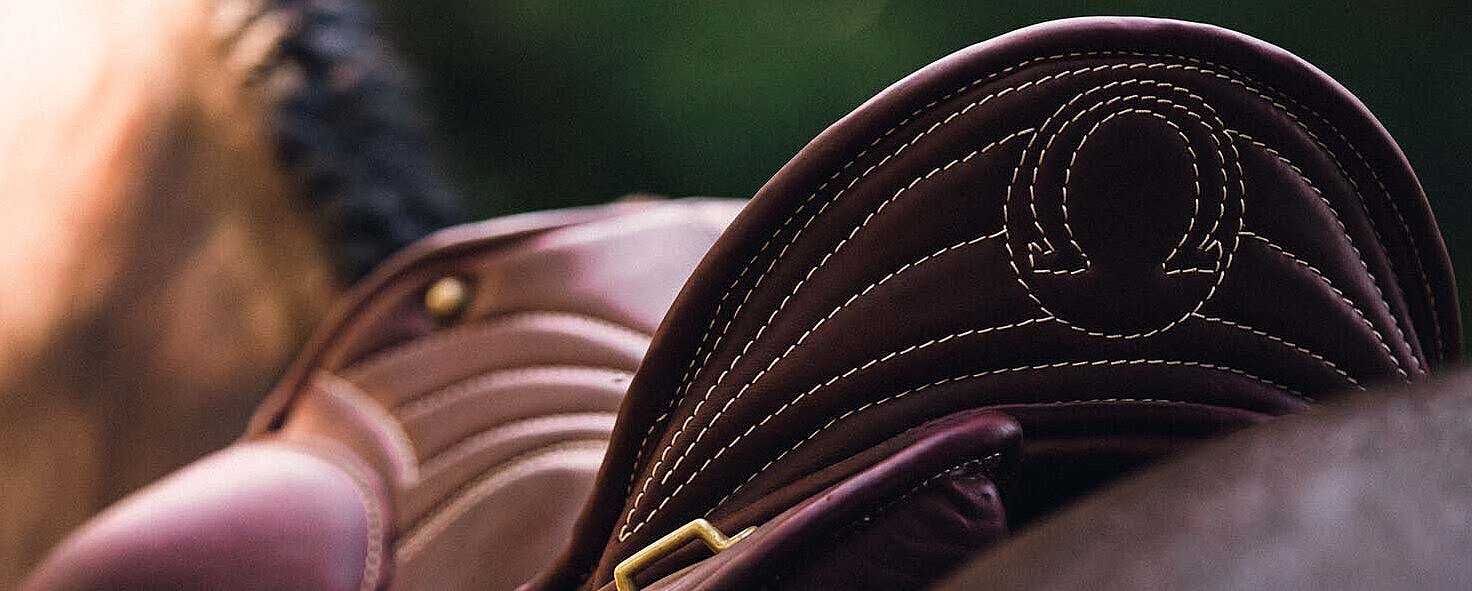Saddle structure in comparison
If we compare a classic saddle and an OMEGA saddle, there are significant differences that are relevant for an optimum saddle fit and therefore the well-being of the horse in the long term. In the following, we would like to show which parts make up a classic saddle and how it is constructed layer by layer.
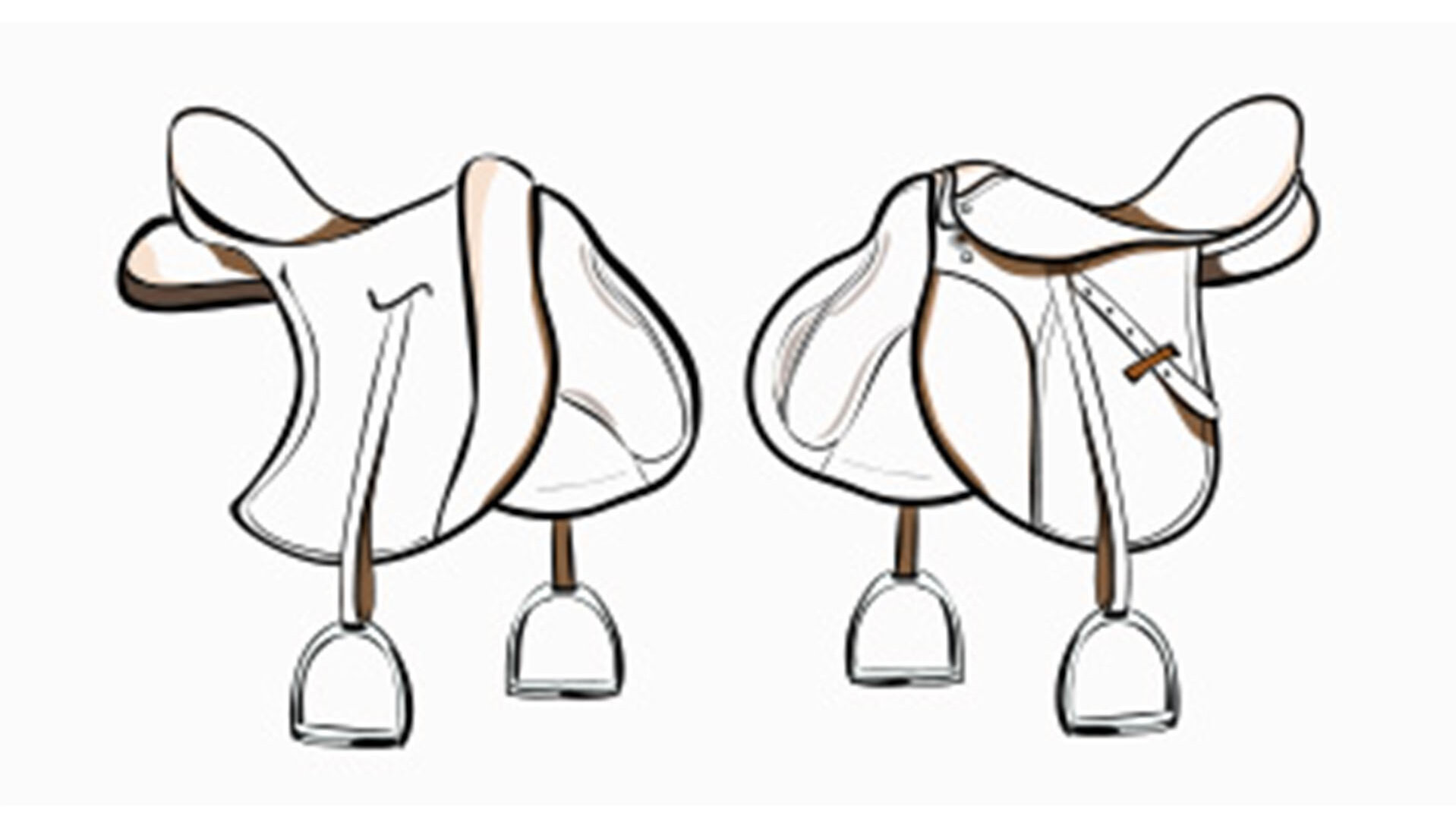
In comparison, we would like to show the differences between a classic saddle and our OMEGA saddle system. We will look at the structure, the possibilities for modification and the effects, particularly with regard to a pressure distribution that is gentle on the horse's back.
Structure of a classic saddle
A classic saddle, as we know it from dressage, show jumping or eventing (with the exception of treeless saddles) is usually built for exactly one of these main areas of use and consists of the following parts: The seat area, the area between the front pommel and the rear pommel, which should fit the rider's seat size. It is shaped according to the centre of gravity - for example, a jumping saddle is flatter than a classic dressage saddle.
Focus of use for classic saddles
The centrepiece of a saddle usually consists of a saddle tree, traditionally made of wood, to which the stirrup bars and girth straps are attached. The saddle flaps, possibly with attached knee rolls, and the lower flap underneath form the side parts of the saddle. Here too, the shape of the saddle flaps and knee rolls depends on the centre of gravity - in the case of a jumping saddle, it is typically wider and shorter than the long, straighter flap of a dressage saddle.
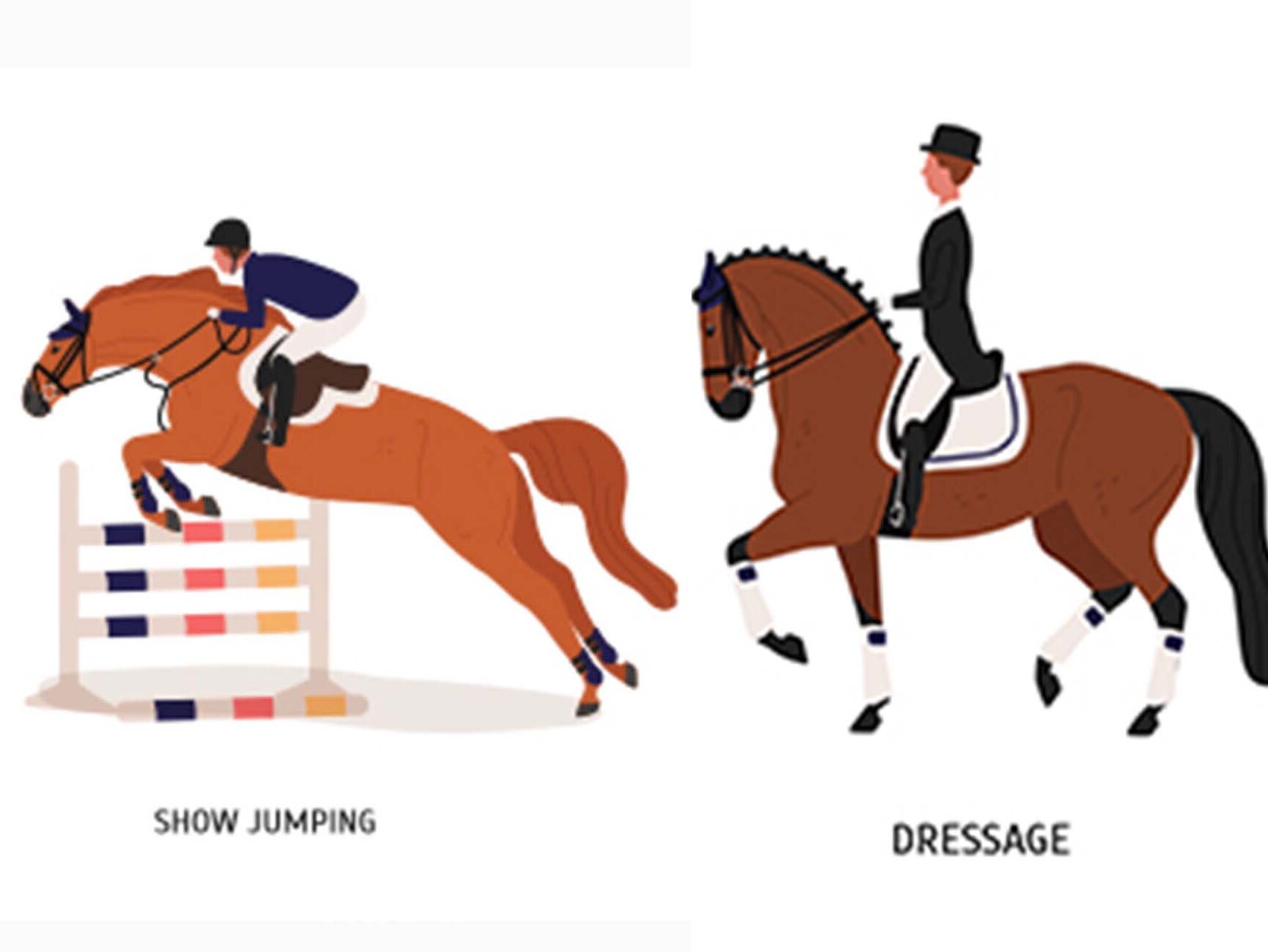
Seating position and leg guidance
The size, shape and position are also tailored to the rider's desired sitting position and leg position for jumping or dressage. The saddle panels are filled with wool and form the padding on the horse's back. The fit is usually adjusted by choosing the right type of saddle, the width of the gullet and the filling of the padding.
OMEGA saddles in comparison
What is the difference between an OMEGA saddle and a classic saddle? Compared to classic saddles, there are some significant differences in the construction and customisability of our OMEGA custom-made saddles. Our passion are custom-made saddles for HORSE & RIDER - as diverse as the equestrian world itself.
Large contact surface for even pressure distribution
Let's start with the features that influence the FIT FOR THE HORSE: The first feature that distinguishes our OMEGA saddles from a classic saddle is the large contact surface. It ensures even and gentle pressure distribution on the horse's back. The panels are positioned in such a way that they form a particularly large spinal canal, which can be up to 12cm wide.
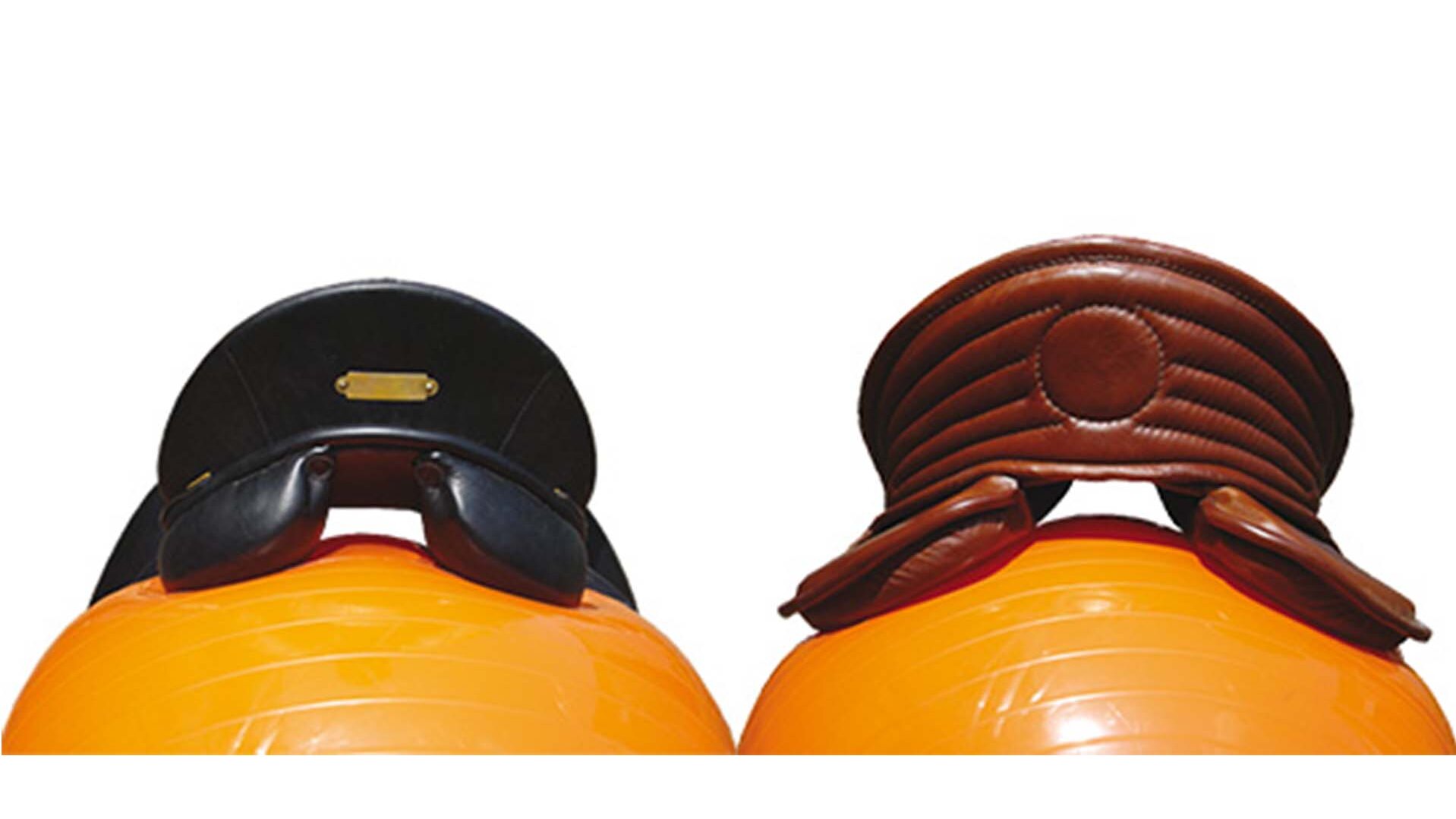
The orthopaedic, flat concave soft foam panels of our customised saddles are significantly wider than the crowned panels of a classic saddle. Our moulded panels are made from different layers of foam and, unlike traditional padding made from upholstery wool, retain their shape and stability over time. The material does not settle and cannot form lumps or harden. This eliminates the need for regular "padding" with our customised saddles and we can manufacture the padding to the millimetre or make specific changes over time.
Great shoulder freedom
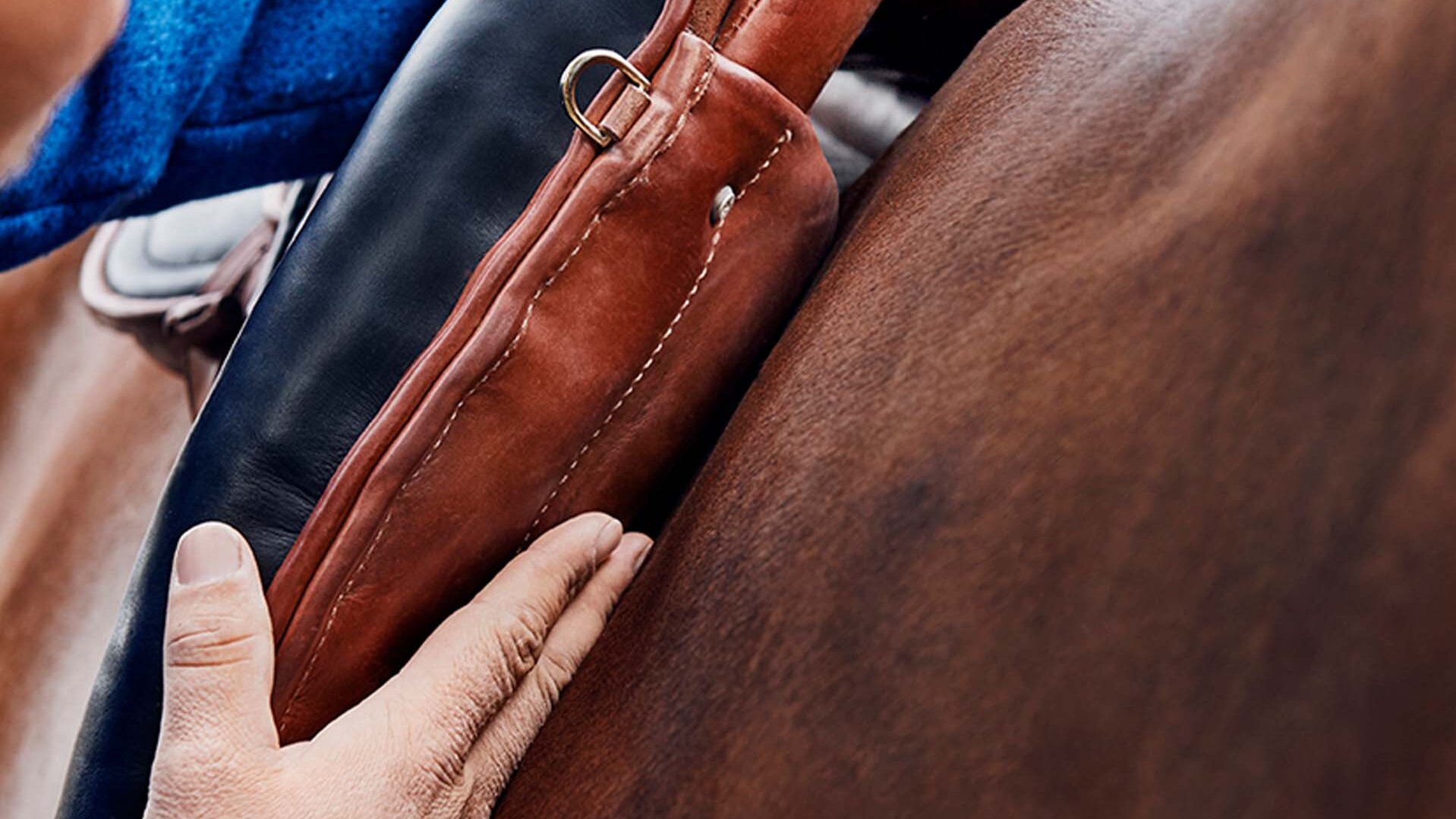
Another outstanding feature of our OMEGA customised saddles is the enormous shoulder freedom. This is made possible by the specially moulded padding in combination with the recessed position of the gullet plate and the anatomical shape of the saddle tree in the shoulder area. Depending on the horse's anatomy, the shape of the saddle panels in the shoulder area can be particularly soft or cut back considerably to allow shoulder freedom far below the saddle.
Adjustable gullet plate and rib cage gullet plate
Compared to classic saddles, our customised saddles not only have a gullet plate in a defined size - we have two sizes that can be changed as often as required: The angle of the chamber width in the front area is set using an infinitely adjustable gullet plate. The angle of the contact surface in the area of the rib cage is set by the adjustable rib cage gullet plate.
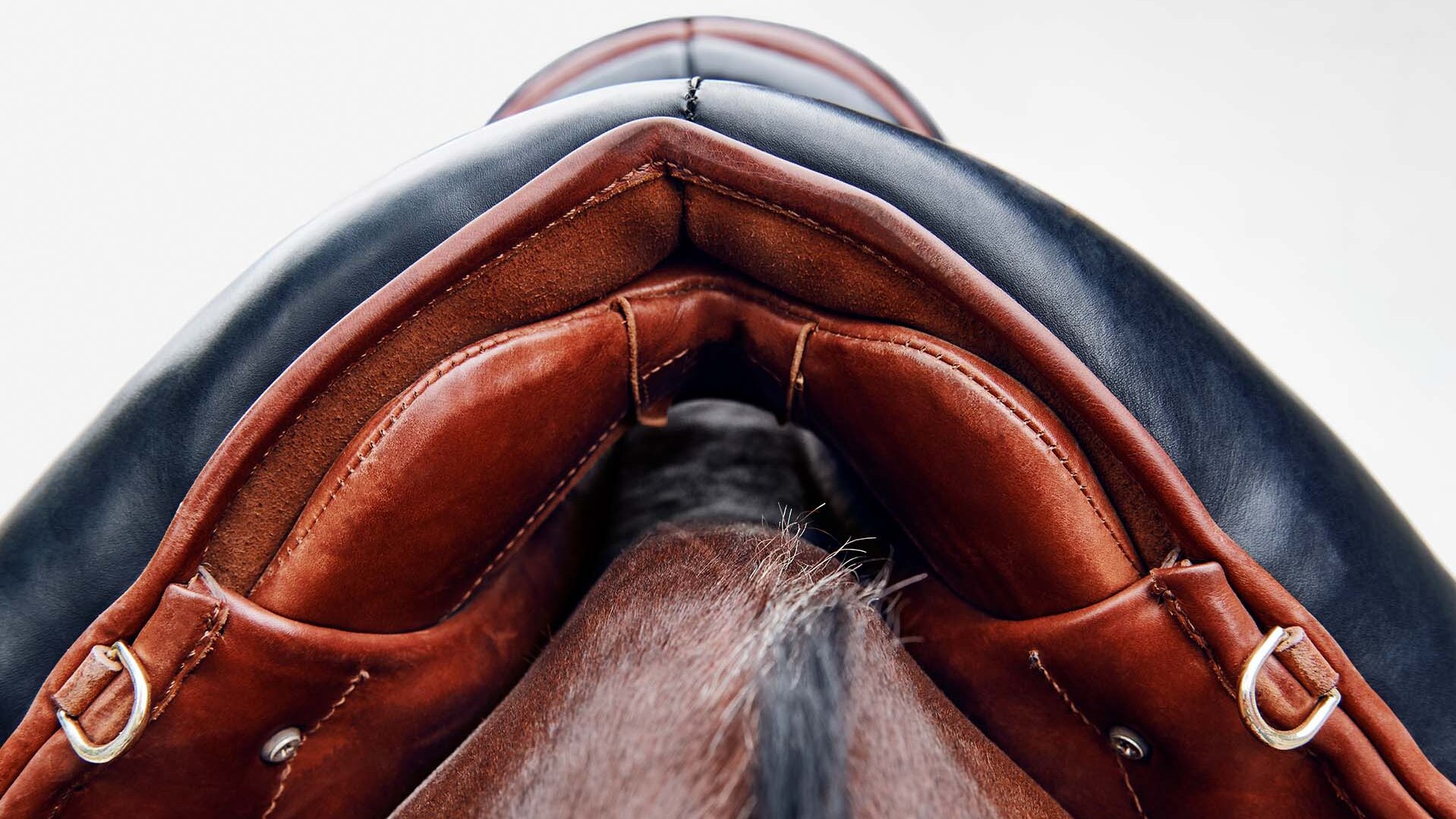
Because only if the entire contact surface is parallel to the horse's back can we utilise the entire contact surface and optimally control the pressure distribution. Both dimensions can be adjusted as often as required to accommodate changes in the horse.
Seat moulding
Let us now turn to the differences that affect the SEAT SHAPE FOR THE RIDER. Every customised saddle is made according to the rider's individual wishes in terms of the seat design. Depending on what the rider finds comfortable, to what extent he wants support from the saddle and what purpose the saddle should fulfil, he puts together the seat shape from different seat types, seat widths and seat depths according to his needs.
The choice of the knee rolls and their shape have a significant influence on how the saddle will later feel and how well it supports the rider's seat. The rider also decides whether the saddle should have a narrow or wide padded seat, a flat or deep seat, a classic rear pommel or a wide cantle.
